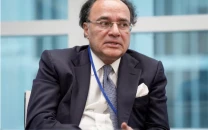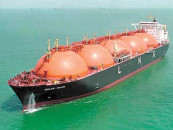Impending default: report says Pakistan’s economy on the brink
Anticipates hyperinflation, depreciation and high unemployment ratio

The specter of a potential default looms large over Pakistan’s already fragile economy, as hopes for the revival of the International Monetary Fund (IMF) loan program fade. The consequences of a default would be dire, with hyperinflation, a significant devaluation of the rupee, a near-halt in imports, the closure of more factories, a spike in unemployment, and the potential for social and political unrest.
Economic indicators have already worsened, signaling the deepening crisis the country currently faces. The local financial system, particularly commercial banks, would face headwinds as they have heavily financed the cash-strapped government in recent years.
In the face of such distress, Pakistan is hoping for support from friendly countries such as China, Saudi Arabia, and the UAE to weather the crisis. A comprehensive report titled “Pakistan Economy: What if Pakistan defaults?” by Arif Habib Limited (AHL) Research’s Economist Sana Tawfik highlights the considerable rise in Pakistan’s default risk due to the lack of progress with the IMF.
While the government maintains it is not backtracking from the ongoing stalled IMF loan programme worth $6.7 billion, Moody’s Investors Services recently predicted that without the IMF programme, the country would default on its debt obligations after June 2023.
The report notes that Pakistan’s forex reserves are dangerously low at $4.3 billion, and the country faces significant debt repayments until June 2024. To meet the external debt servicing requirement of $27 billion in FY24, Pakistan still faces a shortfall of $5 billion. Over FY24-27, the country has a total external debt servicing requirement of $73 billion.
Sovereign defaults often result in a contraction in Gross Domestic Product (GDP). In the case of Sri Lanka, GDP contracted by 7.8% after its default in 2022. According to a study by the Centre for Economic Policy Research (CEPR), the average GDP contraction immediately following a default was 1.6%, rising to 3.3% after two years.
The State Bank of Pakistan (SBP) recently announced that economic growth would be significantly lower than previously projected, with AHL Research anticipating a growth rate of only 1% for the current fiscal year. Some local research houses have even projected an economic contraction before the possible default occurs.
In a default scenario, inflation rates in Pakistan, already high at 37%, could rise even further, said Tawfik.
Following its default in 2017, Venezuela’s inflation rate crossed three digits, with the government printing money to finance its spending and pay off its debt obligations. Similarly, in Zimbabwe, a default in 2000 and subsequent hyperinflation led to prices doubling every 24 hours, rendering the currency practically worthless.
A default would also make it challenging for Pakistan to import essential goods such as petroleum, machinery, and medicinal products. Approximately 73.4% of total imports account for essential items as of 10MFY23.
Exporters may also face difficulties due to non-availability of raw materials, energy shortages, and the shifting of export orders to more stable competitors.
Post default, Argentina and Greece faced a reduction in trade competitiveness and decline in exports, she said. She also anticipated a steep devaluation of the Pakistani rupee against the US dollar post default.
Unemployment would likely increase, exacerbating social unrest, and shortages of essential commodities would further add to the difficulties faced by the population.
The economist recalled the Sri Lankan rupee (LKR) depreciated to 370 against the greenback in post default period in May 2022 compared to LKR202/$ in pre-default period in March 2022. Since then, the currency has, however, recovered amid a breakthrough on the IMF EFF programme. It is trading at LKR304/USD these days. Greece and Argentina serve as cautionary tales, with both countries experiencing significant spikes in unemployment and rising poverty rates.
A post-default scenario would necessitate extensive debt restructuring for Pakistan, given the massive debt servicing requirements in the coming years. Following Sri Lanka’s example, Pakistan would need to engage in separate negotiations with China, other bilateral creditors, and the Paris Club to develop a restructuring plan.
To achieve macroeconomic stability, Pakistan would then have to undertake a new long-term IMF program. The path to recovery and avoiding a default remains challenging, and the country’s economic future hangs in the balance.
Published in The Express Tribune, May 21st, 2023.
Like Business on Facebook, follow @TribuneBiz on Twitter to stay informed and join in the conversation.



















COMMENTS
Comments are moderated and generally will be posted if they are on-topic and not abusive.
For more information, please see our Comments FAQ